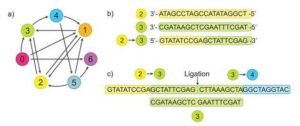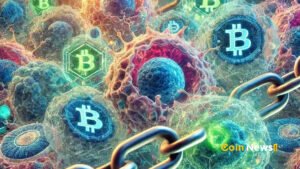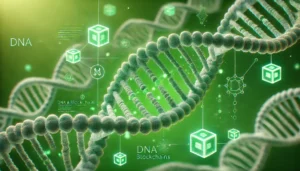This ability might allow the possibility of using living cells as decentralized computational entities, thanks to blockchain and DNA computing convergence. The progress of DNA computing in recent years shows that it is actually possible to program living cells to serve as computers, just like our personal computers. These improvements open the door for pioneering applications within medicine, biotechnology, and data security.
What is DNA Computing?

DNA computing exploits the special qualities of DNA to perform complicated calculations. Quite different in nature from classical computers, which use electronic circuits as computer architecture, mathematics encodes logic on these chips using zeros and ones according to theoretical models of computation.
DNA computing hinges on the biochemical properties of nucleic acids. This allows us to carry out massive parallel processing, which is key for transforming areas such as medicine, storage of data, and security.
Living Cells as Blockchain Nodes

Upon further reflection, the coupling of living cells to DNA computing opens up a future sensibility. Welcome to biological blockchains! Under this model, each cell would be an operational node, recording and validating transactions or cellular activity and gaining popularity for a decentralized system, which might turn out to be the future of data storage and processing that can provide maximum security with maximum efficiency.
Think about an organism that has a single, permanent record of every process and change in each cell type across the entire body.
The Science Behind DNA Computing Technology

DNA computing operates based on the native characteristics of DNA molecules acting as information carriers and storage devices. With the huge storage potential of DNA (one gram can store 215 petabytes), this approach maps all possible string values and converts them to a physical presence, eliminating the need for backup.
Previously, scientists had only managed to encode simple algorithms in DNA strings, and it was not possible to create biological equivalents in flexible circuits that resembled circuits designed by electronic animals as people.
The Intersection: Where Biology Meets Computing
DNA computing is an alternative method to use the molecular structure of DNA in the information processing area and appears to be a breakthrough way for data manipulation. Binary Code (0s and 1s): Conventional computers DNA Computing: The whole idea of DNAs is defined as a double helix containing nucleotide bases: adenine, thymine, cytosine, and guanine.
This enables great parallelism and data storage density beyond present electronic systems.
Potential Applications
Healthcare: DNA computing may provide a way to process genetic information securely, which is conducive to the development of specific therapeutic interventions.
Data Storage: Due to the high storage capacity of DNA, it provides a long-term solution for the data storage problem, which is going up. Using blockchain analytics would also provide one more level of verification for data integrity and security.
Environmental Science: DNA computing could be used with blockchain to keep tabs on or verify environmental information like pollutant counts or wildlife numbers.
What the Future Holds for Blockchains Based on DNA?
Hypothetically, DNA computing for blockchain technology is a turning point. But, it still remains a theoretical concept. Its phenomenal ability to unlock more secure data storage, biomedical applications, or even synthetic biology is like extraspecial.

A world where living cells could autonomously protect and process information could transform healthcare, environmental science, storage data and more.
Difficulties and Ethical Considerations
The opportunity is noteworthy; however, the challenges are equally meaningful. As of now, DNA computing is still in its infancy and needs a lot (I mean very much) more research and development before it can be scaled to practical applications. Additional ethical concerns include the integration of computer technologies into living organisms.
There are, of course, numerous questions that need to be answered before we could deploy cherries and other fruits enhanced with CRISPR technology on a commercial scale—everything from issues surrounding privacy and biosecurity to concerns regarding the misuse of such crops.
What’s more, the fusion of DNA computing and blockchain technology presents not just one new model or idea in both computational paradigms but also a union that will fundamentally change our approach toward computing, data security, and biotechnology. This breakthrough, although still in its early stages, has the potential to change industries across many areas. It also opens up new amenities for innovation and financial growth. While it is still early days for this new term, researchers must now tackle both ethical and technical challenges/difficulties if all the advantages of this revolutionary approach are to be fully realized.












